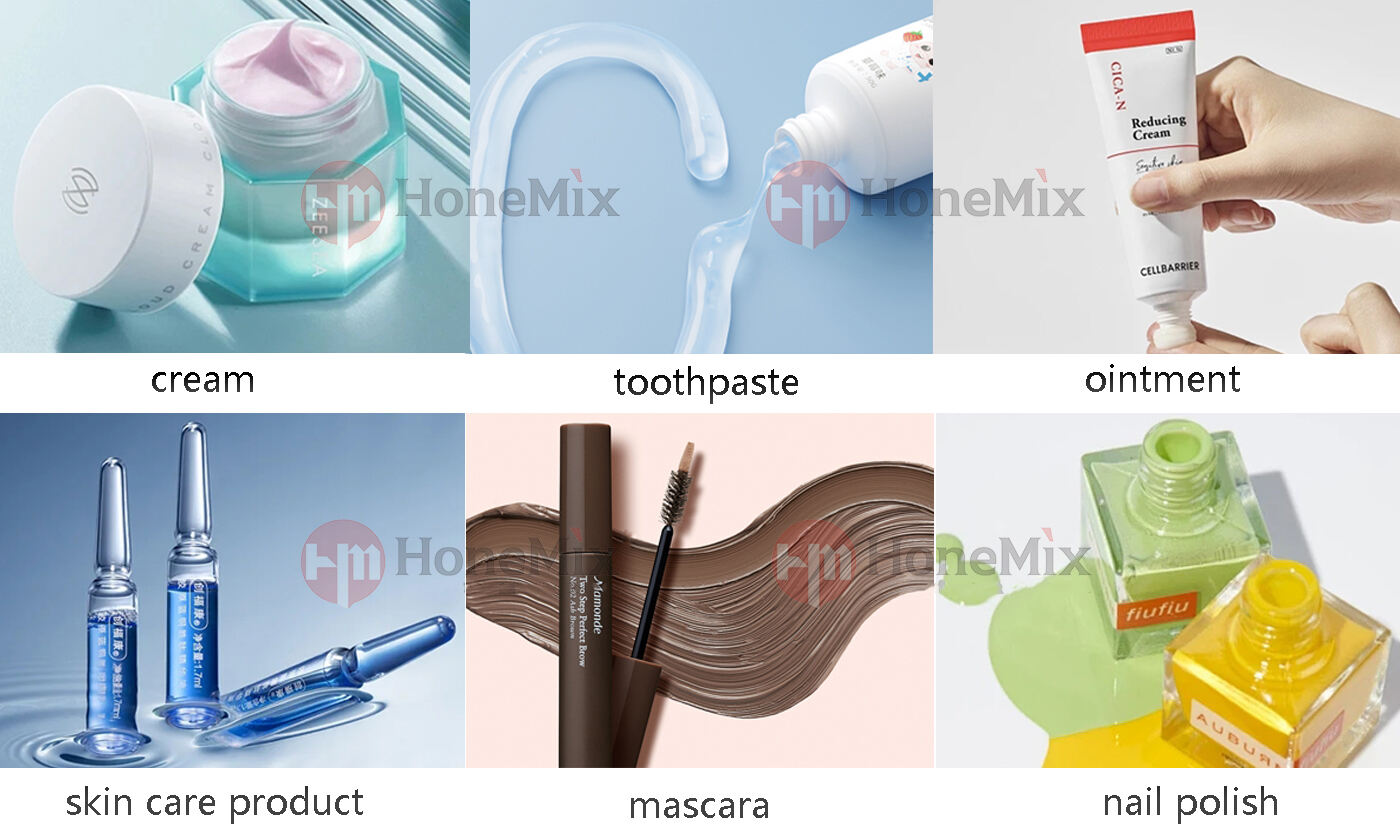| Mjesto podrijetla: | Kina |
| Naziv marke: | HoneMix |
| Broj modela: | HVE |
| Certifikacija: | Ce |
| Vrsta mašine: | Fiksni tip |
| Funkcija: | Miješanje Emulziranje Sirovina |
| Vrsta miješača: | Miješač sa čiscacima zida |
| Kontrola: | Putem tipke |
| Vrsta vakuum pumpe: | Putem vodene cikluse |
| Garancija: | 1 godina |
Radni postupak
Pripremite:
1. instalirajte vakuum miješalici u tvornici
2. spojite električne žice
3. spojite vodu ulaznu cijev i izlaznu cijev
4. napunite vodu u jaket
5. provjerite smjer rada vakuum motora, homogenizatorski motor treba raditi u smjeru kazaljke na satu kada se pokrene mašina. Homogenizator ima mehaničko zatvaračko zatvaranje pa ne može raditi bez proizvoda.
6. ako je vakuum pumpe vodeni tip, morate spojiti hladenu vodu za vakuum pumu, inače se oštećuje, ako je suha vakuum puma, nema potrebe za spajanjem ulaza za hladenu vodu.
7. provjeriti rade li svi ventilator, mjerenja, toplinik ispravno ili ne
8. provjeriti je li temperatura točna ili ne
9. tlak unutar čevne nije više od 1 bar.
10. Testirajte stroj korak po koraku, sporo i sporo
Operacija:
1. napunite sirovine u ulje i vodu te u vodozbiornik
Siroveina koja se disoli u ulju, a zatim ga napuni u uljezbiornik,
Siroveina koja se disoli u vodi, a zatim ga napuni u vodozbiornik
2. Grijanje vodozbiornika i uljezbiornika, miješanje sirovine
Nakon što je gotovo miješanje
3. Uključite vakuumski pumpu, učitajte sirovinu iz ulja i vode u glavni posudbu, a zatim pokrenite miksaž i homogenizirajte prema vašem programu.
nakon što završite proizvod, možete isključiti gotov proizvod s dna pomoću gravitacije, prijenosne pompe ili stisnutog zraka, ili ga iznijeti ručnim kotromanom. Ako imate vakuum unutar posude, prvo otpustite vakuum kroz filter.
1. napunite sirovine u ulje i vodenu čanku.
Materijal koji se disoliše u ulje, a zatim ga napunite u ulju.
Materijal koji se disoliše u vodu, a zatim ga napunite u vodenu čanku.
2. Zagrijajte vodenu čanku i ulju, pomiješajte sirovine.
Nakon potpune mješanja.
3. Uključite vakuumski čembenik, uzu raw materijal iz ulja i vode u glavni posuđe, zatim uključite miksažu i homogenizirajte prema vašem programu, nakon što završite proizvod, možete ispuštati gotov proizvod s dna po gravitaciji ili prenosnim čembenikom ili kompresornim zrakom, ili ga možete izlijevati ručnim kotrom. Ako imate vakuum unutar posuđa, prvo otpustite vakuum kroz filter.
Pripremite:
1. instalirajte vakuum miješalici u tvornici
2. spojite električne žice
3. spojite vodu ulaznu cijev i izlaznu cijev
4. napunite vodu u jaket
5. provjerite smjer rada vakuum motora, homogenizatorski motor treba raditi u smjeru kazaljke na satu kada se pokrene mašina. Homogenizator ima mehaničko zatvaračko zatvaranje pa ne može raditi bez proizvoda.
6. ako je vakuum pumpe vodeni tip, morate spojiti hladenu vodu za vakuum pumu, inače se oštećuje, ako je suha vakuum puma, nema potrebe za spajanjem ulaza za hladenu vodu.
7. provjeriti rade li svi ventilator, mjerenja, toplinik ispravno ili ne
8. provjeriti je li temperatura točna ili ne
9. tlak unutar čevne nije više od 1 bar.
10. Testirajte stroj korak po koraku, sporo i sporo
| Model (Radna Kapacitet) | Emulgator | Miješalo | Vakumska pumpa | Metoda grijanja | ||||||
| KW | Rpm | KW | Rpm | KW | Granični vakuum | |||||
| HVE-50L | 2.2 | 0-3600 | 1.1 | 0-65 | 0.75 | -0.08 | Električno/Parno Grijanje | |||
| HVE-100L | 4 | 0-3600 | 1.5 | 0-65 | 1.5 | -0.08 | ||||
| HVE-200L | 5.5 | 0-3600 | 3 | 0-65 | 2.2 | -0.08 | ||||
| HVE-300L | 7.5 | 0-3600 | 4 | 0-65 | 2.2 | -0.08 | ||||
| HVE-500L | 11 | 0-3600 | 5.5 | 0-65 | 3 | -0.08 | ||||
| HVE-1000L | 15 | 0-3600 | 7.5 | 0-65 | 4 | -0.08 | ||||
| HVE-2000L | 18 | 0-3600 | 11 | 0-65 | 5.5 | -0.08 | ||||
| HVE-5000L | 30 | 0-3600 | 15 | 0-65 | 7.5 | -0.08 | ||||
Vakuumske emulzijatorke nađu široku primjenu u različitim industrijskim granama zbog svoje fleksibilnosti i učinkovitosti u mešanju i emulziranju šire gamute tvari.
1. Kosmetika i lična ozabjera: kreme, lotejoni, serumi i drugi proizvodi za skrinu i uzgoj kosice.
2. Farmaceutski: farmaceutske kreme, masti, gelove i suspenzije.
3. Hrana i pića: sosovi, dressingovi, majoneza i drugi hrana proizvodi koji zahtijevaju stabilnu i jednoliku teksturu.
4. Kemikalije i petrokemije: razne specijalne kemikalije, boje, obloge, leme i smазiva.
5. Biotehnologija i životne znanosti: proizvodnja biofarmaceutska, formuliranje medija za ćelijsku kulturu, proizvodnja cjepiva i biohemski istraživanja


Naš prijateljski tim volio bi saznati od vas!